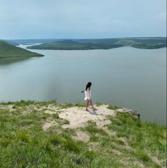
Review on Nikon D3100 DSLR Camera Body (Kit Box) - No Lens Included, International Version with No Warranty by Agata Gajda ᠌

A good product, I advise you to try it.
It is impossible to photograph anything at night or in the evening without using a flash in many modes; the camera will inform you that "the object is too dark" and will disable shooting if you try. The designers were too intelligent. On the one hand, this is beneficial for those who lack expertise, but on the other. This is the case not only when photographing the moon against the backdrop of the night sky, but also, for instance, when attempting to photograph an almost white cat in a room against a dark background under the light of a fluorescent lamp (the cat is very well lit, but there is a shadow behind him) - I had to use a flash for this. Then why did they make the sensitivity go up to Hi2, which is equivalent to an ISO setting of 12800? On my older Canon PowerShot A480, I did not experience any of these drawbacks, with the exception of overexposure; in fact, that is the reason I have referred to them as drawbacks in this article. The bottom line is that Mercedes-Benz is Mercedes-Benz (even the A-class), and Canon is Canon! In addition, I contrasted with Canon for the price of 3000. It's a good thing I at least bought a used Nikon because then I wouldn't have overpaid by as much. The "curves" tool, which is available in many graphic editors (I will name the free Paint NET and GIMP that I use), will help out if you discover too late that the picture is overexposed. Adjust the curve of each color; for instance, with a white sky, lower the upper ends of the curves of red and a little green. Even JPEG can be edited in this manner.
- APS-C matrix. Because the lens's stabilizer is of a high quality, I was able to take a picture that was sharp even though the shutter speed was only 1/2 of a second and the focal length was 55 millimeters (of course, you need to hold the camera well). It is practical to be able to shoot in both RAW and JPEG; however, the raw files produced by the camera are simply compressed, and I am unable to determine whether or not this is more of a detriment than a benefit. Yet, rivals in the Same price group also have it in their inventory.
- In the "Landscape" (LS) Picture Control mode, there is a significant error in the white balance: the frame will be entirely "red" if the majority of the scene consists of the sky and the water, or if the shutter speed (exposure) is somewhat shorter than what is required by the level of illumination and sensitivity. In addition, it basically does not matter whatever white balance preset is selected (provided that it is set correctly: on a sunny day, select "Auto" or "Direct sunlight") - manual white setup, and then a photo editor can assist out substantially! Errors are less noticeable when the picture is controlled by the "Standard" (SD) setting. There are occasions when it slightly exaggerates the level of brightness (overexposure). In addition to this, the brightness is exaggerated when auto-no-flash is used! Surprisingly, it becomes clearer in an instant and ends up being more accurate. According on what I read in the reviews, I can affirm that I was not the first person to notice any of these things. As a consequence of this, the sky is not always blue; as a result, it can be difficult to extract useful information even from RAW (which has been compressed here); therefore, you need to check the view immediately before shooting and make any necessary adjustments to the exposure, ISO, and aperture (see also the comment below). In the beginning, it appeared as though it would be impossible to turn the flash off completely, even when using the manual mode (M). The fact that you may switch off the flash by merely closing its lid is not mentioned in the instructions at all. Moreover, the flash may be adjusted _through_ the menu in exposure priority, aperture priority, program auto (P), and "manual," but it cannot be turned off. It would be great if they did a shutdown like this for all of the modes by hand and wrote it down in the instructions. However, in certain modes, it can be disabled through the use of the menu. This lack of clarity is problematic. In addition, there is a setting called "auto without flash" and a mode called "landscape," in both of which the flash is always turned off. There is no easy way to set the shutter speed to "infinity" from the menu; however, you can use the "M" mode of the A / M switch on the lens instead. This allows you to manually rotate the lens while being guided by the sharpness in either the viewfinder (which is electronic) or the display. You simply cannot wind it up all the way to the top; it will not be infinite, but who knows what, and it spins more slowly than is strictly necessary.
New products
Comments (0)
Top products in 📷 Digital Cameras
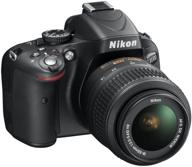
Nikon D5100 Digital SLR Camera with 18-55mm VR Lens - High Resolution 16.2MP

172 Review
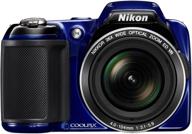
Nikon COOLPIX L810 Digital Camera: 16.1MP, 26x Zoom, NIKKOR ED Glass Lens, 3-inch LCD (Blue)

95 Review
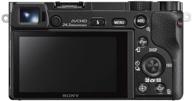
Revamped Sony Alpha a6000 Mirrorless Digital Camera: 24.3MP SLR Camera with 3.0-Inch LCD and Power Zoom Lens

103 Review
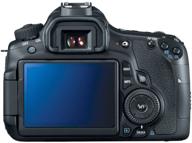
Canon EOS 60D: 18MP CMOS Digital SLR Camera Body - Your Next Photography Companion

125 Review





